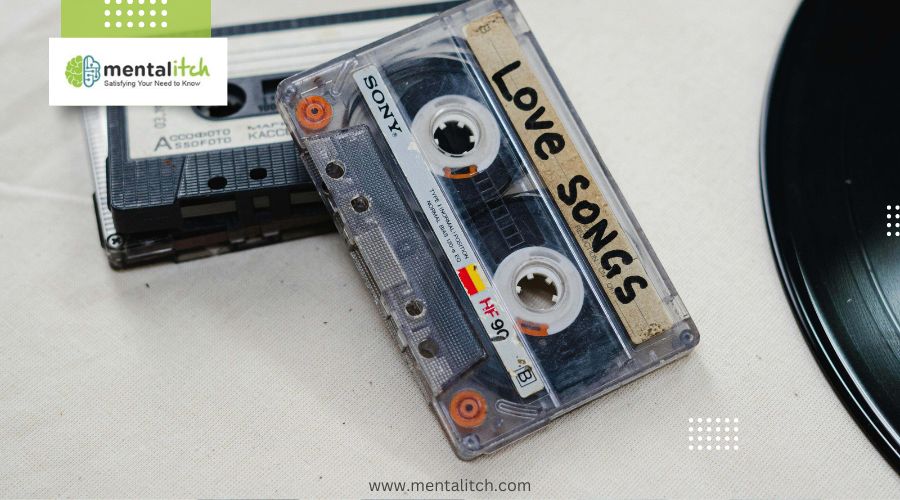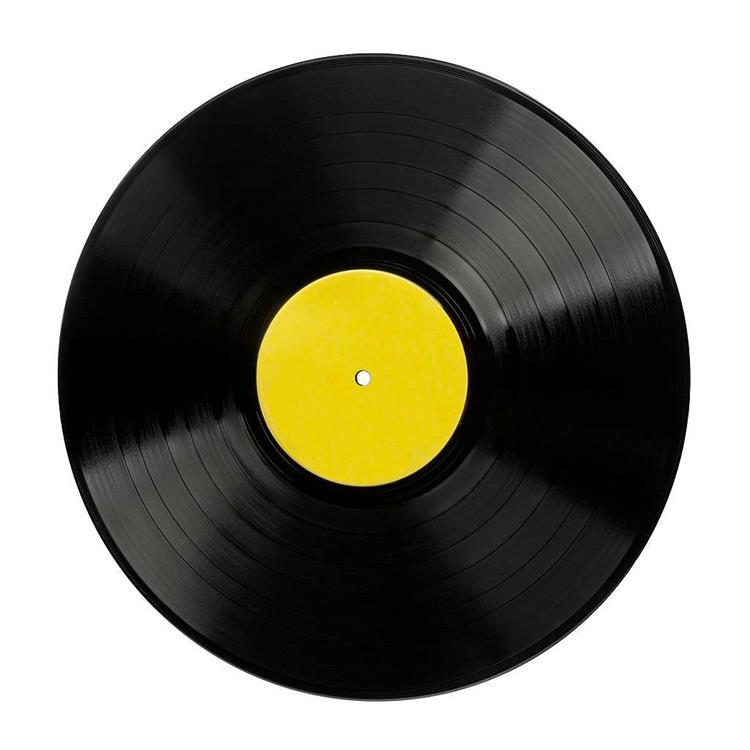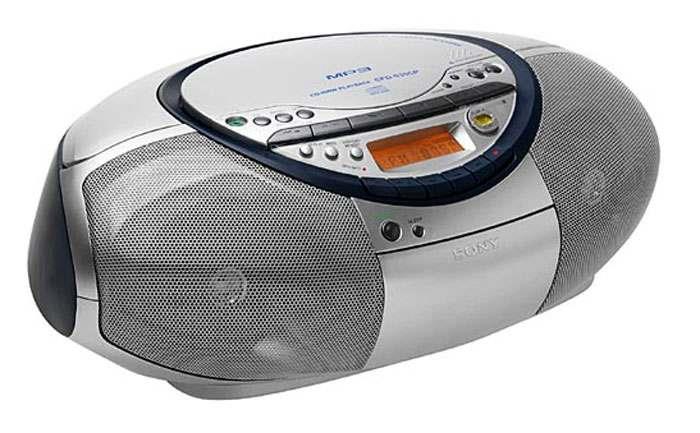The 1980s were a vibrant era for music, marked by a variety of genres and artists that shaped the sound of the decade. It was a time of innovation and change, with new technologies and styles emerging to define the music scene. People consumed music through cassette tapes played on portable Walkmans, while MTV revolutionized music discovery with 24/7 music videos. Vinyl records remained popular for their warm sound, alongside the introduction of CD players for digital music. And.. there was much more too.
How Did People Listen to Music in the 80s?
Music couldn’t be heard through wireless devices as we can today, and there were several issues to deal with. Lets begin with the devices that helped back in the day.
Cassette Tapes
Cassette tapes were the go-to music format in the 1980s, offering a convenient and portable way to enjoy music. These small plastic cases housed a length of magnetic tape that could store music on two sides. The popularity of cassette tapes soared due to their affordability and ease of use.
One of the key reasons for the popularity of cassette tapes was the rise of portable cassette players, commonly known as Walkmans. These devices allowed music lovers to take their favorite tunes with them wherever they went, whether on a walk, a bus ride, or a road trip. The Walkman became an iconic symbol of the 80s, symbolizing the freedom and joy of listening to music on the go.
Throughout the history of cassette tapes, the most beloved aspect was the ability to create mixtapes. These were personalized collections of songs recorded onto a blank cassette. Creating a mixtape was a labor of love, requiring careful selection and arrangement of songs to create the perfect mood or message. Mixtapes were often given as gifts or used to express feelings for someone special. For example, a mixtape could start with a lively song like “Wake Me Up Before You Go-Go” by Wham! to energize the listener, followed by a romantic ballad like “Careless Whisper” for a more intimate moment.
The Walkman
In 1979, Sony introduced the Walkman, a revolutionary device that transformed the way people listened to music. The Walkman was a portable cassette player that allowed users to listen to music on the move, untethered from bulky stereo systems. Its compact size and lightweight design made it perfect for listening to music while jogging, commuting, or just relaxing outdoors.
The impact of the Walkman on music listening was profound. Before its introduction, music was primarily enjoyed in stationary locations, such as homes or cars. The Walkman changed that by allowing people to take their music with them wherever they went, giving rise to a new era of personal music enjoyment.
One of the key features of the Walkman was its simplicity. It had basic controls for play, pause, rewind, and fast forward, making it easy to use for people of all ages. The device ran on batteries, ensuring that users could enjoy their music without the need for a power outlet.
The Walkman also had a significant cultural impact. It became a symbol of personal freedom and individuality, as people could listen to their own music choices without disturbing others. It also contributed to the rise of the “mixtape” culture, as users could create their own personalized playlists to suit their mood or occasion.
MTV: Revolutionizing Music Consumption
MTV, or Music Television, launched on August 1, 1981, and quickly became a cultural phenomenon that forever changed the way people consumed music. It was the first 24-hour cable network dedicated to music videos, offering a non-stop stream of visual entertainment to viewers across the United States.
Music videos had existed before MTV, but the network’s arrival brought them to the forefront of popular culture. Artists now had a platform to showcase their creativity and artistry through visual storytelling, enhancing the listening experience for fans.
MTV not only provided a platform for established artists but also served as a launching pad for new and emerging talents. The exposure gained from having their videos played on MTV could make or break an artist’s career, leading to the rise of “MTV stars” in the 1980s.
The influence of MTV extended beyond just music. The network’s VJs (video jockeys) became household names, and its programming shaped fashion, trends, and youth culture. MTV also played a significant role in breaking down racial barriers in the music industry, as it showcased a diverse range of artists from various backgrounds.
For example, Michael Jackson’s “Thriller” video became an iconic moment in music history, with its groundbreaking special effects and choreography captivating audiences worldwide. The video’s success on MTV helped propel the album to become the best-selling of all time.
Vinyl Records
Vinyl records have a rich history dating back to the late 19th century when they were first introduced as a format for storing and playing music. They became the dominant music format in the mid-20th century, offering listeners a high-quality audio experience that couldn’t be matched by other formats of the time.
In the 1980s, vinyl records experienced a resurgence in popularity, despite the rise of newer formats like cassette tapes and CDs. This resurgence was driven by a combination of nostalgia for the sound and feel of vinyl, as well as the unique characteristics of the format that endeared it to audiophiles and collectors.
One of the key factors in vinyl’s resurgence was its role in club culture. DJs, who had long been proponents of vinyl for its tactile nature and superior sound quality, continued to use records as their primary medium for mixing and playing music in clubs. The size and durability of vinyl records made them ideal for DJ use, allowing for precise cueing and mixing of tracks.
Vinyl also played a significant role in the development of new music genres in the 1980s, particularly in the realm of electronic dance music (EDM). DJs used vinyl records to create innovative mixes and remixes, pushing the boundaries of what was possible with music.
For example, the emergence of house music in Chicago and techno in Detroit was heavily influenced by DJs who used vinyl records to create new and exciting sounds on the dance floor. The physical act of mixing and blending records became an art form in itself, with DJs gaining recognition for their skill and creativity.
CD Players
In the 1980s, a new technology emerged that would change the way people listened to music: the compact disc, or CD. CD players were introduced as a sleek and futuristic alternative to traditional analog formats like cassette tapes and vinyl records.
Compared to cassette tapes and vinyl records, CDs offered several advantages. One of the most significant advantages was their superior sound quality. CDs used digital audio technology, which eliminated the hiss and distortion often associated with analog formats. This made CDs the preferred choice for audiophiles and music enthusiasts who wanted the best possible listening experience.
Another advantage of CDs was their durability. Unlike cassette tapes, which could degrade over time with repeated playbacks, CDs were more resistant to wear and tear. This made them a more reliable choice for long-term music storage.
CDs also offered greater convenience compared to vinyl records. With a CD, listeners could easily skip between tracks and quickly access their favorite songs, something that was more cumbersome with vinyl’s manual needle placement.
For example, a CD could hold up to 74 minutes of music, while a vinyl record typically held around 20 minutes per side. This meant that listeners could enjoy longer albums or compilations without having to flip or change discs.
Boomboxes
In the 1980s, the boombox emerged as a cultural icon, symbolizing music, style, and urban life. Also known as a “ghetto blaster” or “jambox,” the boombox was a portable stereo system that featured a radio tuner and cassette player, often with built-in speakers that produced powerful sound.
Boomboxes became synonymous with urban settings, where they could be seen and heard blasting music in parks, on street corners, and at block parties. Their popularity among youth was due in part to their ability to provide a shared music experience, allowing groups of people to listen to music together in public spaces.
One of the defining features of boomboxes was their size and design. They were typically large and boxy, with handles for easy carrying and often adorned with flashy designs or graffiti-like artwork. The visual impact of a boombox was just as important as its sound, making it a fashion statement as well as a music player.
Radio
In the 1980s, radio continued to play a crucial role in music consumption, despite the rise of new technologies like cassette tapes and CDs. Radio stations remained a primary source of music discovery and entertainment for people of all ages.
One of the reasons for radio’s continued importance was its accessibility. Unlike other music formats that required purchasing or owning specific devices, radio was free and available to anyone with a radio receiver. This made it a popular choice for music lovers who wanted to stay up-to-date with the latest hits and trends.
Radio stations also played a significant role in shaping music trends in the 1980s. DJs had the power to introduce new songs and artists to their audiences, influencing what became popular and what fell by the wayside. This influence was particularly evident in the rise of genres like hip-hop and new wave, which gained mainstream exposure through radio airplay.
Final Words
The 1980s was a transformative era for music, characterized by a blend of innovation, diversity, and cultural impact. It was a time when new technologies like the Walkman and MTV revolutionized how people consumed music, making it more personal and accessible. Vinyl records experienced a resurgence, while CDs offered superior sound quality and convenience. Boomboxes became a cultural icon, and radio continued to shape music trends. This decade saw the emergence of new genres and the rise of iconic artists who left a lasting legacy.




